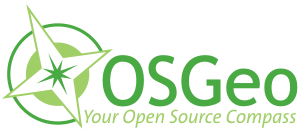Selected Presentations
Home > Presentations > Abstract details
Title
OPEN-SOURCE EARTHQUAKE AND HYDRODYNAMIC MODELLING
Abstract
Geoscience Australia has developed two free and open source models; the Earthquake Risk Model (EQRM) and in collaboration with the AustralianNationalUniversity, the hydrodynamic model, ANUGA. Both models estimate damage and loss to residential communities from earthquake and a range of hydrodynamic hazards, such as flood and tsunami. Both models have been developed in python using scientific and GIS packages, such as Shapely, Numeric and SciPy. Both rely on an underlying geospatial data-structure to model natural hazards.
EQRM estimates the ground motion and damage at a set of locations for a suite of earthquakes, representing all plausible events. Modelling the earthquake risk involves estimating the probability of losses due to building damage from earthquakes. EQRM development began in 2001 and was released as open source software on Sourceforge in 2007.
ANUGA solves the conservative form of the shallow water wave equation, using a finite-volume method. This method allows the study area to be represented by an unstructured mesh with variable resolution to suit the particular problem. Development of ANUGA began in 2004 and it was released as open source in 2006 on Sourceforge. It is now being used by academic, government and commercial organisations world wide to assess tsunami and flood inundation and damage.
This presentation will outline key lessons learnt in releasing these models as free and open-source software. Examples of where these models have been used to support the government’s and the community's understanding of the economic impact of earthquakes and hydrodynamic hazards will be briefly described before the current development activities outlined.
Authors
Duncan Gray - Geoscience Australia
David Robinson - Geoscience Australia

